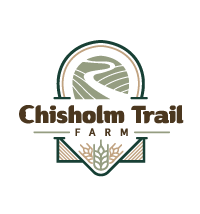Once again, we are growing emmer in our field this summer. Like einkorn, emmer is an ancient grain that has exceptional nutrition and sustainability. This wheat allows our past to be linked to our future. As you continue to read you will find out why we believe it deserves to be planted in our fields and put on your table.
For you, emmer wheat is a nutritional gem. It boasts a rich profile of proteins, fibers, vitamins, and minerals. Let's take a closer look at its nutritional benefits:
1. High Protein Content: Emmer wheat contains higher protein levels compared to modern wheat varieties. If you are looking to boost your protein intake, this is an excellent choice for you.
2. Rich in Fiber: Emmer wheat is high in dietary fiber, which promotes healthy digestion and aids in maintaining balanced gut microbiome. High fiber diets are linked to lower risks of heart disease, stroke, diabetes, and certain cancers.
3. Essential Minerals and Vitamins: Emmer is packed with essential nutrients, including magnesium, phosphorus, potassium, and vitamins B and E. These nutrients support various bodily functions, from bone health to metabolic processes.
4. Antioxidant Properties: The antioxidants found in emmer wheat help combat oxidative stress and inflammation, which are linked to chronic diseases.
For us, emmer goes beyond nutritional advantages and offers us and the environment several benefits.
1. Resilience and Adaptability: Emmer wheat is known for its hardiness and ability to thrive in poor soil conditions and harsh climates. This makes it a reliable crop for our area because you never know what less-than-ideal growing conditions Mother Nature will throw at us.
2. Low Input Requirements: Emmer requires fever chemical inputs such as fertilizers and pesticides compared to modern wheat varieties. This aids in reducing our farming costs and minimizing environmental impact.
3. Biodiversity Preservation: By growing emmer wheat, we contribute to the preservation of agricultural biodiversity. This genetic diversity is crucial for the resilience of food systems, providing a buffer against diseases and climate change.
4. Sustainable Farming Practices: Emmer wheat can be an integral part of sustainable farming systems. Its deep root system helps prevent soil erosion and improves soil structure, promoting long-term soil health.
For our culinary delight, emmer wheat's nutty flavor and firm texture make it a versatile wheat in the kitchen. It can be used in a variety of dishes, from traditional breads and pastas to modern salads and soups. Its adaptability in recipes is making it increasingly popular among chefs and home cooks.
1. Baking: Emmer flour can be used to make hearty, flavorful bread and baked goods. Its unique taste adds a new dimension to traditional recipes. I know from my own cooking experience that emmer wheat bakes the best chocolate chip cookies!
2. Cooking: Whole emmer grains can be cooked and used in salads, soups, and as a substitute for rice or quinoa. The chewy texture and rich flavor enhance a variety of dishes.
3. Pasta Making: Emmer wheat is used to produce high-quality, nutrient-dense pasta. Its firm texture makes it an excellent choice for a variety of pasta dishes.
Overall, emmer wheat is a remarkable crop that offers numerous benefits for nutrition, agriculture, and culinary arts. By embracing this ancient grain, we not only tap into a rich source of nutrients but also promote sustainable farming practices and biodiversity. We are proud to grow emmer wheat and contribute to the revival of this ancient grain. Join us in celebrating the legacy and future of this incredible grain.
